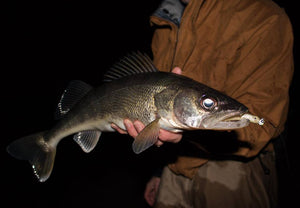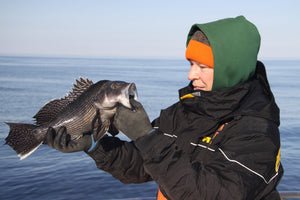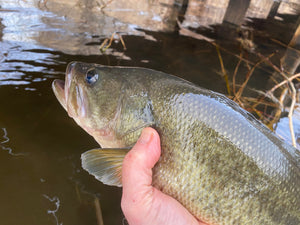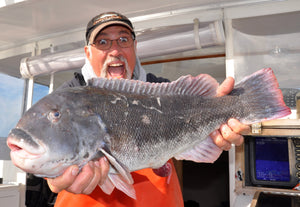It’s Time To Target Winter Panfish
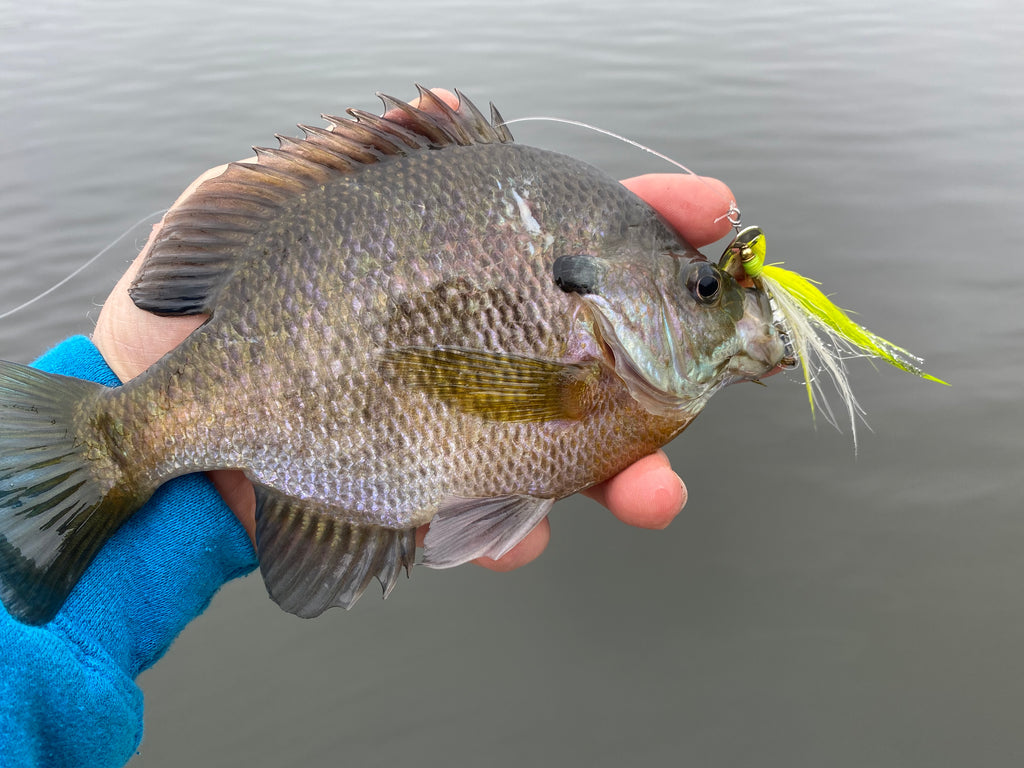
By Tom Schlichter
Most veteran freshwater anglers are aware that panfish can be caught on a year-round basis. The less experienced, however, often seem surprised to learn that sunfish, perch and crappies will bite even in the coldest months. Their chagrin makes sense when you look at it from a novice’s viewpoint. After all, in the warmer months you can stroll up to the shore of almost any lake or pond and see dozens of bluegill, pumpkinseed, perch and crappie scurry away from the bank. In the winter, though, there are few fish along the banks. That's because most species tend to hold in deeper water once the temperature plummets. Find these holdover spots and you can score well, especially in later February and March as the waters begin to warm just enough to start prompting panfish of all types to begin replenishing their reserves before the pre-spawn movement to the shallows gets underway.
LOOK DEEP
When the water is cold, panfish, like most other types of fish, gravitate toward the warmest water they can find. In our local lakes, this usually translates into deep-water holes, which is where your baits and lures should be spending the most time. The real key, however, is finding a six- to eight-foot deep hole or ledge adjacent to a shallow. It’s here that the fish will gravitate to in the final throughs of winter. The deep water area in front of a dam on a mill pond is another great spot, as is any hole gouged in the bottom where a feeder stream enters into a lake. In areas such as these, panfish will often school tightly, suspended a foot or two above the bottom.

Catching Spring crappies and punmpkinseeds is a blast – and easier to do if you’ve scoped out a few possible honey holes during late winter. Photo courtesy of OutdoorTom.com.
Now, the catch to all this deep-water theory is that a surprising number of local lakes and ponds lack such deep-water honey holes. In such cases, you'll generally find the fish holding in established underwater weed beds well off the bank. The weed beds seem to hold a little more warmth than surrounding bare flats while also offering a bit of protection to the panfish. Thus, if you can't find deep water, working submerged weed beds should be you next recourse.
FISH LIGHT
While winter panfish aren't exactly dormant, they're not aggressive either. With the water crystal-clear and the fish still a little slow to move and respond, you can figure that they'll get a pretty good look at your bait or lure before they commit. For this reason, light lines and small offerings seem to work best.
To really do a number on winter panfish, step down from your typical freshwater setup to a lightweight 4-pound-class spinning outfit. Such lightweight gear allows for long casts off the bank, feeling the slightest nibbles, and presenting tiny offerings that will be difficult for the fish to examine, easy to swallow, and just the right size for a sunny or perch to ingest at this time of year. Selecting a longer lightweight rod than you might use later in the season provides the leverage to cast even further off the bank. A lightweight 6- to 7-footer fits the bill better than the typical 5- to 5-1/2-foot ultra-light spring trout setup, especially if you have to cast into the wind. Stop by the shop and check out TFO’s Trout-Panfish Spinning Rods if you need a new stick for this. TFO’s 6’ 6” TPS 561-1 ultralight is a good place to start your search.

Bass pro Paul Mueller favors small, green- or pumpkinseed-colored jigs for catching big crappies and bluegills in late winter and early spring. Locating a couple of deadfalls not far from the bank during winter months when the lakes are clear will give you a great head start on the action. Photo courtesy of OutdoorTom.com.
RIGGING UP
Rigging for winter panfish is really pretty simple. Start by placing a 2- to 2-1/2-inch, torpedo shaped, weighted foam float on your line one to three feet above where your hook will be positioned. Aerodynamic and weighted, this style float will help carry your line far off the bank when you cast. Its position should be set to keep your offering about a foot above the bottom or six inches above the tops of any weed beds you'll be probing.
Next, tie a small grub, tube lure or even a wet fly to the end of your line using an improved clinch knot. Choose either a 1/64-ounce minnow-shaped head or a 1/32-ounce tube bait head. Now slide on a body and you're set to go. For the body, choose a small grub or tube measuring no more than 1-1/2 inches in length. Dark colored lures seem to work best this time of year. Squirmin' Squirts are an excellent choice in pumpkinseed, pumpkin with chartreuse tail, or black with chartreuse tail patterns. Berkley Gulp Alive! Waxies Micro Baits are another good choice, although with these I prefer white or pink over the darker colors, and Trout Magnets in the 1/64th-ounce size offer yet another excellent option. You can also simply tie on a 1/64-ounce jighead and tip it with a wax worm or a couple of meal worms purchased from a pet store.

Don't hesitate to break out the fly rod for winter crappies. On warmer days, they'll be more than willing to strike wooly buggers and small streamers near structure. Photo: Jeff Lomonaco
THE GLIDE IS THE KEY
At this point, you’re all set to go! Simply cast out to your deep water spot or favored weed bed – or far from the bank as possible over featureless bottom, and allow the jig to settle for a minute or two, then begin a painfully slow and steady retrieve. You want the lure to simply glide past the fish. If the wind is blowing, you might choose to let your float drift over productive water rather than reel it home. A slow drift can be deadly, especially if the wind is blowing your lure right back toward your feet. Simply reel in any slack as your floats moves inshore, left or right. As a rule, the calmer the water, the deeper the fish will hold and the slower you'll need to retrieve.
Bites are generally subtle. Usually, they’ll register as a slight tilt or twist of the float. Sometimes they simply stop the float from moving. Rarely is the float pulled under the water as will happen when the fish feed aggressively later in the spring. If you notice any change in the movement of the float, tighten up on your line and use a light flick of the wrist to set the hook. Pull too hard and you'll simply yank the lure out of your quarry's mouth.
LET ‘EM GO
As a rule, late-winter pan-fishing is best early and late in the day during periods of low light. Cloudy weather also seems to improve scores, especially where crappies are concerned. A good bite develops on many waters around 7:00 a.m. and again from 4:00 p.m. until dusk. Sometimes, you'll find the fish will continue to bite after dark - but be warned the nighttime fishing at this time of year can be a bit more than chilly. Given fair weather, this late-winter action with panfish should be well underway by mid-February, and will feature some of the biggest bluegill, pumpkinseed and crappies to be caught all year long before most anglers even think about getting their season underway.
It may take a little searching to find the right spot but once you finally zero in the action can be especially sweet. Just keep in mind that the fish you are targeting are this spring’s prime spawners so practicing catch, photograph and release (CPR) tactics is always a good idea.
- Bryce Poyer


